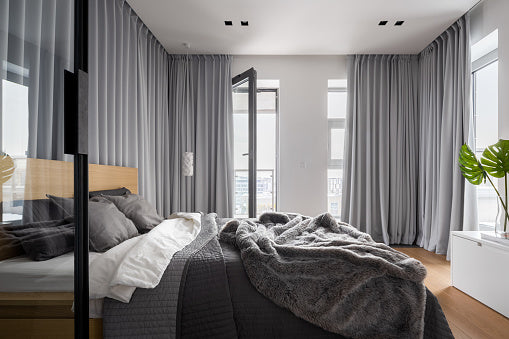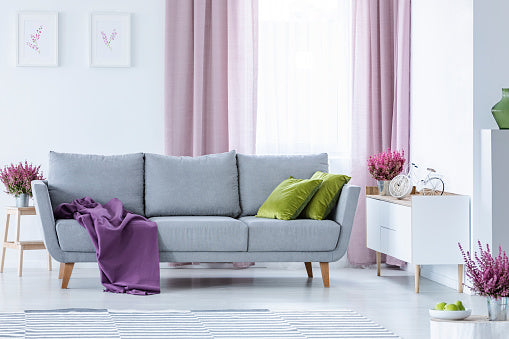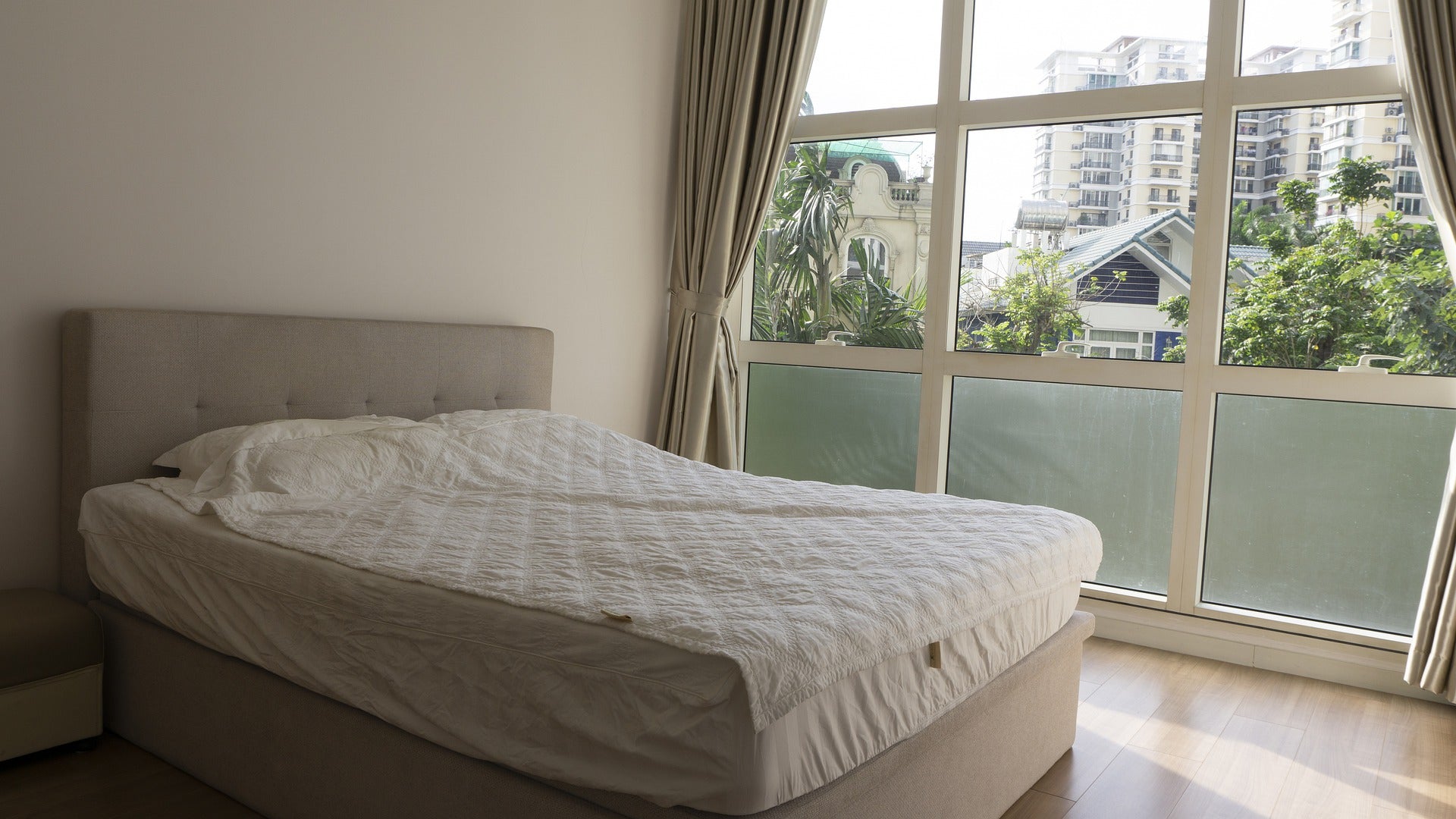
Which colour curtain best suits the bedroom?
According to stylists and interior designers, curtains may truly transform a bedroom, but only if well picked. We've gathered some of our favourite bedroom curtain designs to assist you in finding the ideal pair. The heading type, fabric weights, length, pattern, colour, and practical concerns must be carefully considered when choosing bedroom curtains. Before getting too caught up in the finer points, remember that the primary function of bedroom curtains is to block out light and keep your room comfortable. Always keep this in mind while thinking about bedroom designs and decorating options.
Calming and serene colours like green, blue, and others are a fantastic choice in a bedroom. These colours are noted for their relaxing and soothing properties. Blue is even thought to aid in the treatment of insomnia and anxiety. It's crucial to consider the rest of the room's colour scheme and décor when picking the colour and tint of your bedroom curtains. As a general rule, a bedroom should only have one prominent star. Consider keeping your curtains in a mild neutral tone if the rest of your bedroom is decorated in bright colours and patterns. If your space is already bland, though, you may add some colour with vibrant coloured curtains.
Contrasting Colours or Similar Colours
Curtains that match your bedding are a simple way to bring a bedroom together. However, making things excessively matchy-matchy, such as putting the same fabric design on your curtains and beds, might give them a rigid, old-fashioned aspect. Matching scatter cushions with patterned drapes are a subtle yet foolproof way to tie the space together. Alternatively, use bedding and drapes in the same or complementary colour palette for a more modern aesthetic. You may even match textures rather than colours, such as linen curtains and bedding in complementary colours for a soothing bedroom.

Lighter or Darker
A drape the same colour as your wall – but darker – is a definite method to produce a seamless homogenous impression. For instance, if your walls are apricot in tone, choose a burnt-orange curtain. If your room is primarily white, your curtains should be off-white. A more comfortable bedroom may help everyone: A relaxing sleeping environment might help you feel calmer at night and much more refreshed in the morning. Consider the following hues for a soothing bedroom, which may be especially effective when paired with room-darkening blackout bedroom curtains and drapes.

Cream Colours
Cream colours are both relaxing and adaptable. Mixing cream with grey gives a soothing effect. For example, cream walls can go well with grey bedroom draperies in your bedroom. If you're searching for a minimalist look, Hordos advises the gray-cream mix.

Dark Gray and Blue
Dark grey combined with blue is a stunning combination to consider. Blue is a soothing hue on its own, and when coupled with grey, it creates the impression of a well-organized yet restful space.
Soft Grays
Keeping with the grey motif, mixing and matching several colours of light grey is excellent. This is particularly useful in rooms with white walls, where a hint of grey may soften the look and make the space feel more polished and less institutional. Gray bedroom blankets, drapes, furniture, and bespoke curtains may be ordered online to find the perfect match.
Blue Curtain
This type of setup communicates your self-assurance. Curtains can add visual appeal, pattern, and colour to your bedroom. You may also make your sleeping area more appealing by hanging lighter-coloured drapes. Make cautious not to stray too far from your chosen wall colour. A curtain that does not match the background defeats the purpose of having it as a decorative item.
Way to Go
Begin by imagining how you want your curtains to complement the arrangement of your room. This will give you a better idea of creating a neutral environment. Studying your wall colour is an excellent technique for selecting a curtain colour. As your ideal curtain colour, choose a deeper shade of that hue. Do you want your window treatments to be seen first before anything else in the room? If this is the case, choose a curtain that contrasts sharply with the nearby walls. Choose a yellow-based curtain if your walls are blue, for example. Because the yellow curtain stands out from its surroundings, it naturally becomes the focus of attention.


